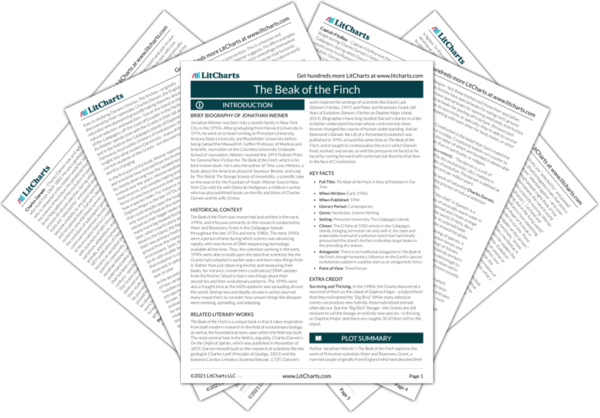The quotation that appears at the end of this passage is significant, because it illustrates that the natural world is evolving directly in response to humanity’s attempts to control it. By “aim[ing]” at a species directly, humanity influences how that species evolves. The species will almost always try to get out of the way of humanity’s range and thus ensure its survival—so anything we do to attack nature will, ironically, often result in nature growing stronger and finding new ways to evolve out of our metaphorical sights.
